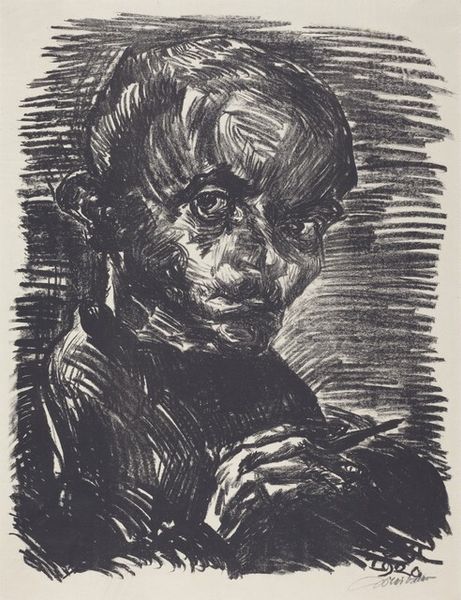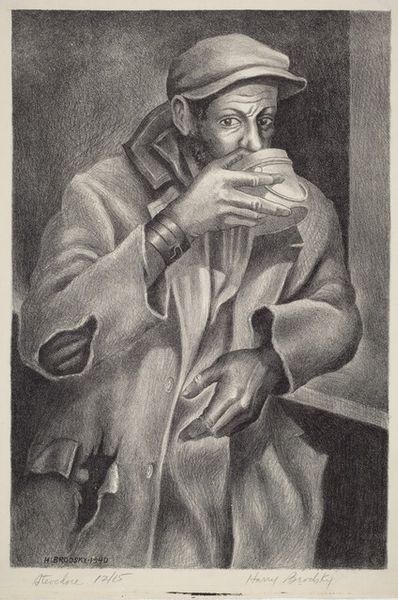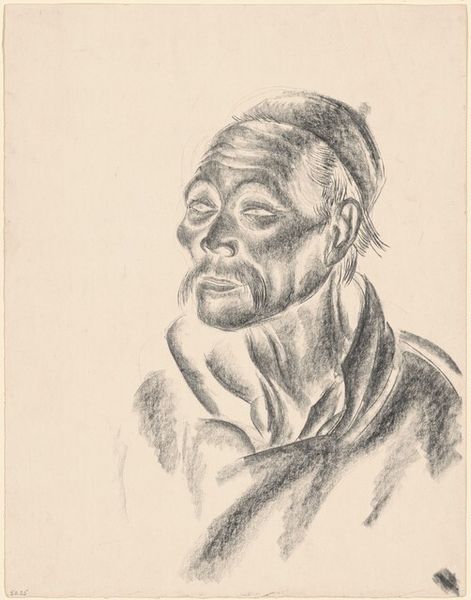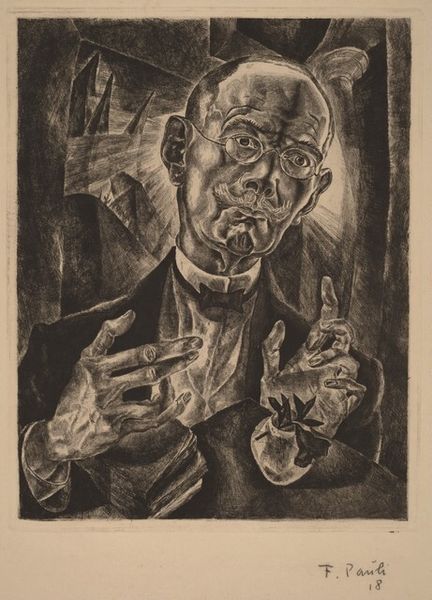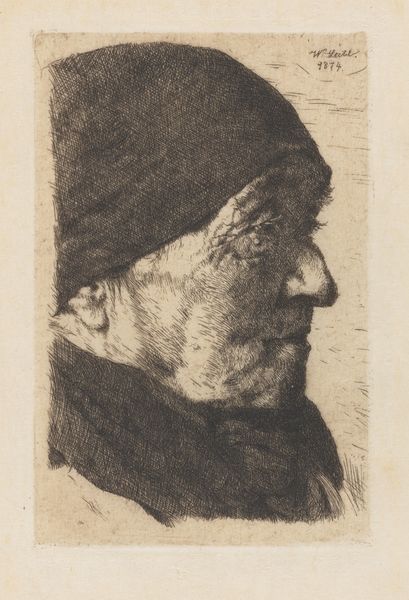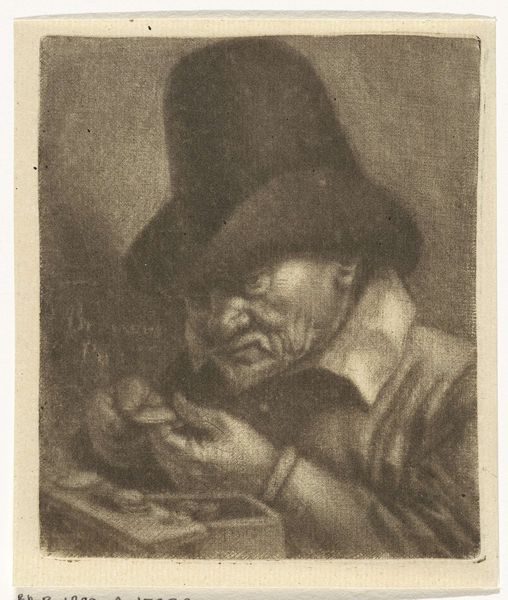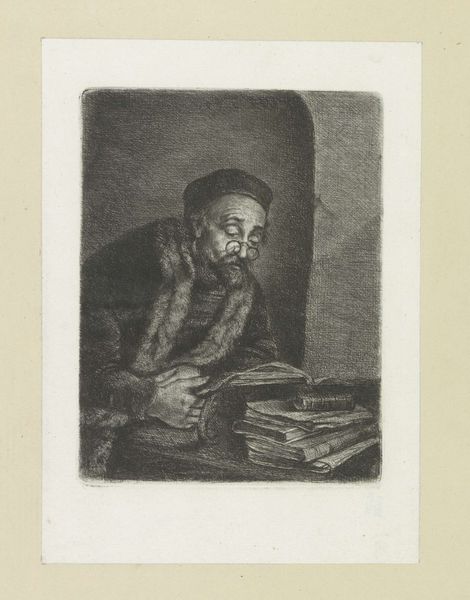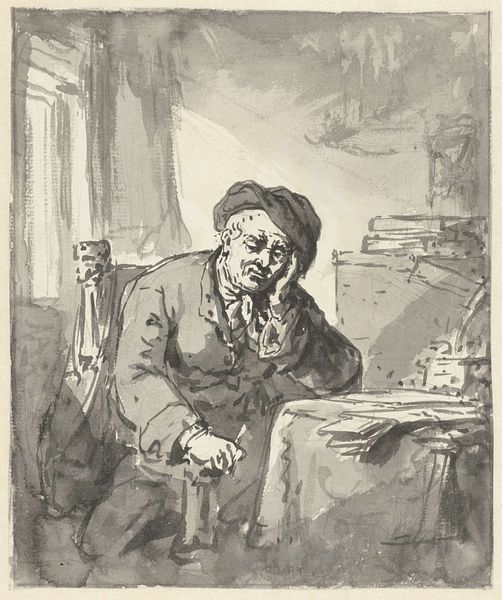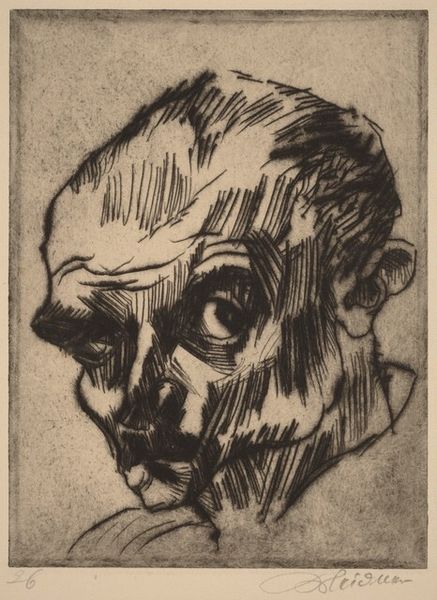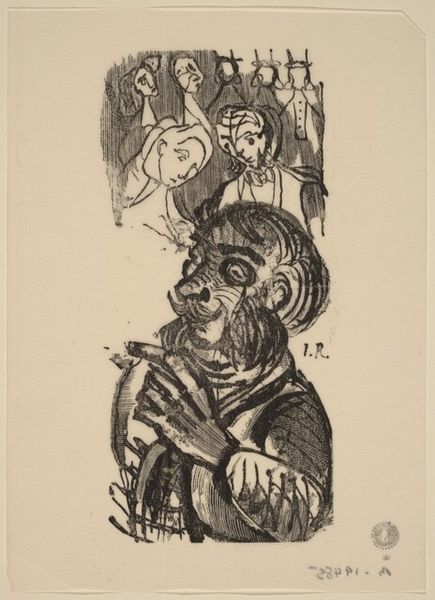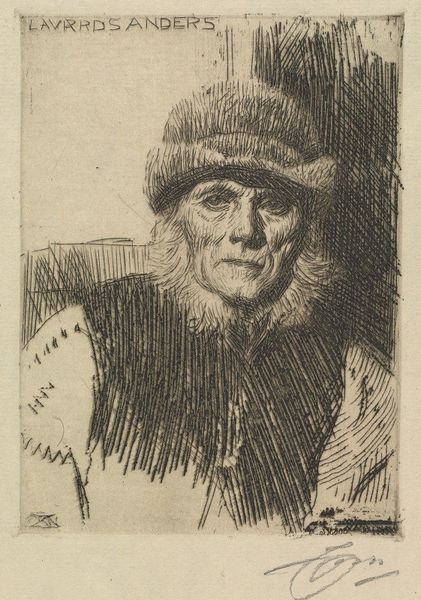
drawing, print, graphite
#
portrait
#
drawing
# print
#
social-realism
#
graphite
#
portrait drawing
#
genre-painting
#
portrait art
#
realism
Dimensions: image: 356 x 238 mm sheet: 483 x 314 mm
Copyright: National Gallery of Art: CC0 1.0
Editor: Here we have Jacob Burck’s 1935 print titled "Coffee and _______." It's a rather somber portrait, isn't it? The graphite rendering gives it a raw, almost journalistic feel. What do you see when you look at it? Curator: Well, first, I notice the title is incomplete. "Coffee and..." what? The implied consumption points us towards the economic realities of the 1930s. This print, presumably made cheaply and quickly, likely had a specific social function. Notice the visible grain of the paper, the way the graphite sits *on* the surface. The hand holding, presumably, the receipt all suggest precarious labor. Editor: I see that, a quick study printed, almost like propaganda, during a very precarious time in world history. Curator: Precisely. This isn't about aesthetic beauty in the traditional sense. It's about representing a social reality through accessible materials and techniques. We should also consider the mechanics of printmaking: how the artist disseminates an image, creating multiples. Editor: Do you think Burck chose printmaking to broaden accessibility? It looks like his intaglio-styled social-realist portraits were designed for mass consumption, sort of. Curator: Yes, absolutely. Graphite and printmaking are cost-effective media; available resources to an artist driven by communicating and responding to an audience struggling with tangible financial strains, or participating in the WPA. The material choices reflect that intention. Editor: So, looking at "Coffee and ____," it's less about the subject's inner life, and more about the economic and production processes that shaped the artwork itself, reflecting the social climate and reaching a wide audience, cheaply. That changes how I see the work. Curator: Exactly! Understanding the “how” helps illuminate the “why” and for "whom”. The artistic choice and labor of it.
Comments
No comments
Be the first to comment and join the conversation on the ultimate creative platform.

